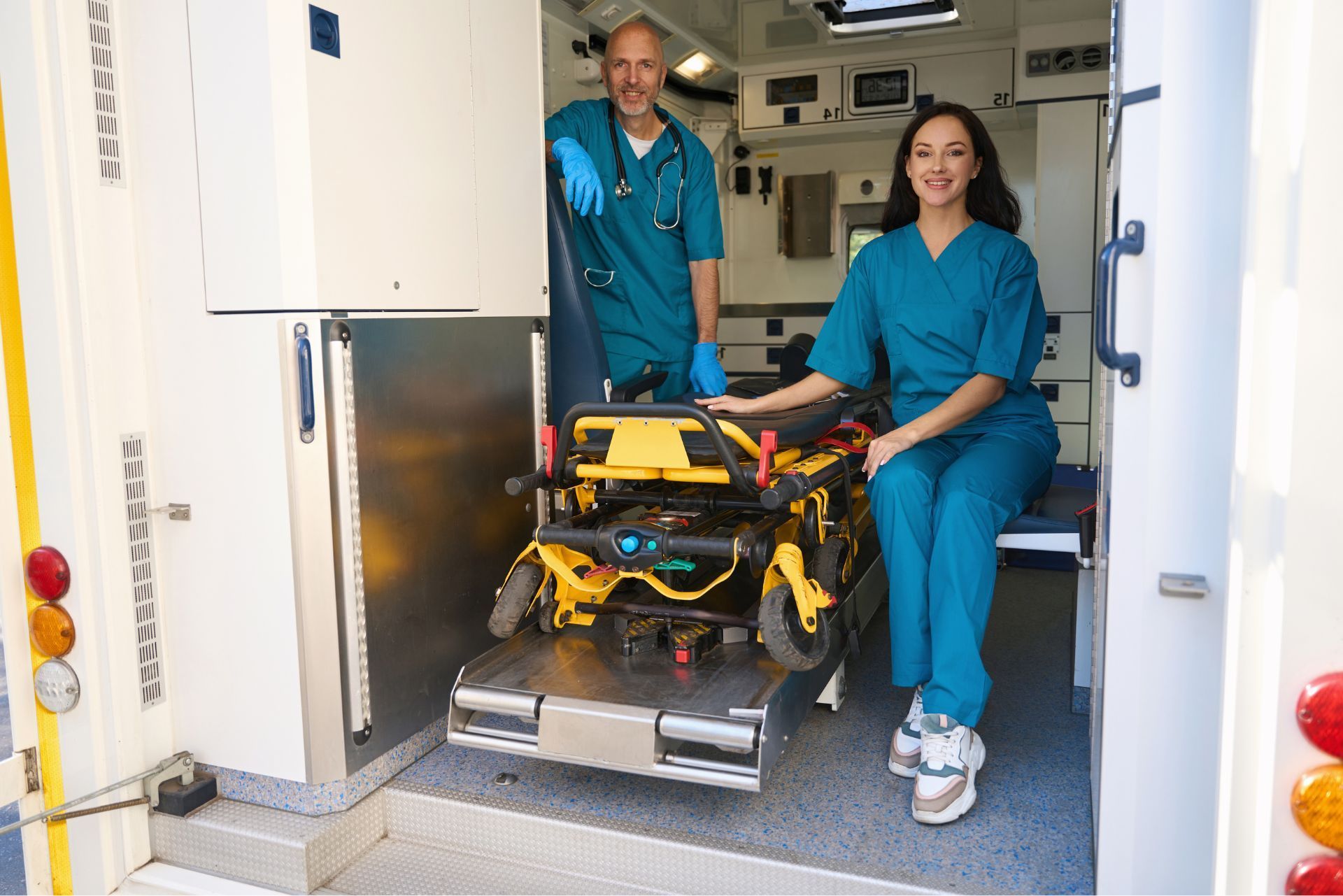Top 3 Recommended Policies

Medical transport services play a crucial role in ensuring patients receive timely care, especially in emergencies. In Iowa, the landscape of medical transport insurance is vital for both providers and patients. Understanding the intricacies of this insurance can make a significant difference in accessing necessary medical services. This article delves into the essential aspects of Iowa medical transport insurance, covering everything from coverage types to the claims process.
Understanding Medical Transport Services
Medical transport services encompass various modes of transportation designed to move patients who require medical attention. These services can range from basic ambulance transport to more specialized air medical services. Understanding the types of services available is essential for both patients and providers.
Types of Medical Transport
In Iowa, medical transport services can be categorized into several types:
- Ground Ambulance Services: These are the most common form of medical transport, equipped to handle emergencies and non-emergency situations.
- Air Ambulance Services: Used for critical situations where time is of the essence, air ambulances can transport patients quickly over long distances.
- Non-Emergency Medical Transportation (NEMT): This service is designed for patients who need transportation to medical appointments but do not require immediate medical attention.
Each type of transport serves a unique purpose and may have different insurance coverage requirements. Understanding these distinctions is crucial for patients seeking medical care in Iowa.
The Role of Medical Transport in Healthcare
Medical transport services are integral to the healthcare system. They not only provide critical care during emergencies but also facilitate access to specialized medical services. For patients in rural areas of Iowa, these services can mean the difference between life and death. Moreover, they help in transferring patients between facilities, ensuring continuity of care.
In addition to their life-saving capabilities, medical transport services also play a vital role in enhancing patient comfort and reducing anxiety during transit. Many ground ambulances are equipped with advanced medical equipment and staffed by trained professionals who can provide care en route, making the journey as smooth as possible. Furthermore, air ambulances often feature state-of-the-art technology, allowing for real-time monitoring of patients' conditions, which is crucial for those in critical states. The presence of specialized medical personnel during transport can significantly improve patient outcomes by ensuring that immediate care is available should any complications arise during the journey.
Additionally, the logistics of medical transport are complex and require careful coordination among various healthcare providers. Dispatch centers must assess the urgency of each situation, determine the most appropriate mode of transport, and communicate effectively with hospitals to prepare for incoming patients. This level of organization is essential, especially in emergencies where every second counts. Moreover, as telemedicine continues to evolve, medical transport services are adapting to incorporate technology that allows for remote consultations during transit, further enhancing the care patients receive while on the move.

Medical Transport Insurance: An Overview
Medical transport insurance is designed to cover the costs associated with transporting patients to and from medical facilities. This type of insurance can be a standalone policy or part of a broader health insurance plan. Understanding how medical transport insurance works is essential for both providers and patients.
Types of Coverage
When it comes to medical transport insurance, there are several types of coverage to consider:
- Emergency Transport Coverage: This covers the costs associated with emergency medical transport, including ground and air ambulance services.
- Non-Emergency Transport Coverage: This coverage is for patients who need transportation for scheduled medical appointments but do not require immediate medical attention.
- Long-Distance Transport Coverage: This type of insurance is crucial for patients needing to travel significant distances for specialized care.
Each type of coverage has its own set of rules and limitations, making it essential for patients to understand their specific needs and the insurance options available to them. For instance, emergency transport coverage often comes with a higher premium due to the immediate nature of the service, while non-emergency transport may be more affordable but requires prior authorization from the insurance provider. Additionally, long-distance transport coverage can vary significantly in terms of reimbursement rates, depending on the distance traveled and the type of medical services required at the destination.
Who Needs Medical Transport Insurance?
Medical transport insurance is beneficial for a wide range of individuals, including:
- Patients with chronic illnesses who require regular medical appointments.
- Individuals living in rural areas with limited access to healthcare facilities.
- Families with elderly members who may need assistance with transportation to medical services.
Understanding the need for medical transport insurance can help individuals make informed decisions about their healthcare coverage. Furthermore, it is vital for caregivers and family members to recognize that the logistics of medical transport can often be as critical as the medical care itself. For example, patients with mobility issues may require specialized vehicles equipped with medical equipment or trained personnel to ensure their safety during transit. This highlights the importance of selecting a policy that not only fits the financial aspects but also meets the unique transportation needs of the patient, ensuring that they receive timely and appropriate care without unnecessary stress or complications.
How to Choose the Right Medical Transport Insurance
Selecting the right medical transport insurance can be a daunting task. With various options available, it's essential to consider several factors to ensure adequate coverage.
Assessing Your Needs
The first step in choosing the right insurance is to assess individual needs. Consider the following:
- Frequency of medical appointments and the likelihood of needing transport.
- Distance to the nearest medical facility and the availability of transport services.
- Specific medical conditions that may require specialized transport services.
By evaluating these factors, individuals can better understand what type of coverage will best suit their needs. Additionally, it’s important to think about the potential for emergency situations. If you or a loved one has a chronic illness or condition that could lead to sudden medical needs, having a plan in place for urgent transport can be crucial. Furthermore, consider any mobility challenges that may necessitate specialized vehicles equipped to handle wheelchairs or other assistive devices, ensuring that you have access to the appropriate transport when needed.
Comparing Insurance Providers
Once needs have been assessed, the next step is to compare different insurance providers. Key aspects to consider include:
- Coverage Options: Ensure the provider offers the necessary types of coverage for your specific situation.
- Cost: Compare premiums, deductibles, and out-of-pocket expenses to find an affordable option.
- Customer Service: Research the provider's reputation for customer service and claims processing.
Taking the time to compare options can lead to better coverage and peace of mind. Additionally, look into the provider's network of transport services. Some insurers have partnerships with local transport companies, which can enhance the quality and reliability of service. Reading reviews and testimonials from current or past policyholders can also provide insight into how well the provider handles claims and customer inquiries. It’s worth noting that some insurance plans may offer added benefits, such as wellness programs or telehealth services, which can further enhance your overall healthcare experience.
Understanding the Claims Process
Filing a claim for medical transport services can be a complex process. Understanding how to navigate this process can help ensure timely reimbursement and reduce stress during a challenging time.
Steps to File a Claim
The process of filing a claim typically involves the following steps:
- Gather Documentation: Collect all necessary documents, including transport receipts, medical records, and insurance information.
- Complete the Claim Form: Fill out the insurance provider's claim form accurately, providing all required details.
- Submit the Claim: Send the completed claim form and supporting documents to the insurance provider, either online or by mail.
Each insurance provider may have specific requirements, so it's essential to follow their guidelines closely. Additionally, keeping copies of all submitted documents can be beneficial in case of disputes or follow-up inquiries. Some providers may also offer an online portal where you can track the status of your claim, making it easier to stay informed throughout the process.
Common Challenges in the Claims Process
While filing a claim, individuals may encounter various challenges, including:
- Denials: Claims can be denied for various reasons, such as lack of coverage or insufficient documentation.
- Delays: The claims process can sometimes take longer than expected, leading to frustration.
- Complexity: Understanding the terms and conditions of the policy can be challenging, especially for those unfamiliar with insurance jargon.
Being aware of these challenges can help individuals prepare and navigate the claims process more effectively. For instance, if a claim is denied, it’s crucial to understand the reason behind the denial and gather any additional information that may be required for an appeal. Many insurance companies have a formal appeals process, and knowing how to utilize it can significantly increase the chances of a successful outcome. Furthermore, connecting with customer service representatives can provide clarity and guidance, helping to demystify the often intricate insurance landscape.

Cost Considerations for Medical Transport Insurance
The cost of medical transport insurance can vary widely based on several factors. Understanding these factors is essential for budgeting and making informed decisions.
Factors Affecting Cost
Several factors can influence the cost of medical transport insurance, including:
- Type of Coverage: Emergency transport coverage typically costs more than non-emergency transport coverage.
- Geographic Location: Costs may vary based on the region and availability of services.
- Individual Health Needs: Pre-existing conditions or the need for specialized transport can increase premiums.
By understanding these factors, individuals can better anticipate the costs associated with medical transport insurance. For instance, those living in rural areas may face higher premiums due to limited access to medical facilities and transport services, while urban dwellers might benefit from a wider range of options that can help drive costs down. Additionally, the choice between air and ground transport can significantly affect pricing; air transport is often more expensive but may be necessary for critical situations where time is of the essence.
Budgeting for Medical Transport Insurance
When budgeting for medical transport insurance, consider the following tips:
- Review your healthcare needs and anticipate potential transport requirements.
- Compare multiple insurance quotes to find the most affordable option.
- Consider setting aside a dedicated fund for out-of-pocket expenses related to medical transport.
Effective budgeting can help alleviate financial stress and ensure access to necessary medical services. Additionally, it may be beneficial to consult with a financial advisor or insurance broker who specializes in health-related policies; they can provide insights tailored to your unique situation and help navigate the complexities of insurance plans. Furthermore, staying informed about changes in healthcare regulations and insurance policies can empower individuals to make proactive adjustments to their coverage, ensuring they are not caught off guard by unexpected costs or changes in service availability.
Frequently Asked Questions
What is the difference between emergency and non-emergency medical transport insurance?
Emergency medical transport insurance covers urgent situations requiring immediate medical attention, such as ambulance services during a heart attack. Non-emergency medical transport insurance, on the other hand, is for scheduled appointments where immediate care is not necessary. For instance, non-emergency transport might be used for patients who need to attend routine check-ups, physical therapy sessions, or follow-up appointments after surgery. This type of transport can include services like wheelchair vans or stretcher transport, ensuring that patients are safely and comfortably transported to their destinations without the urgency that characterizes emergency services.
Will my regular health insurance cover medical transport costs?
Many health insurance plans include some level of coverage for medical transport services, but the extent of that coverage can vary. It's essential to check with your insurance provider to understand what is covered under your plan. Some plans may cover only a portion of the transport costs, while others might have specific criteria that must be met for coverage to apply. Additionally, certain insurers may require prior authorization for non-emergency transport, meaning that patients must obtain approval before scheduling their ride. Understanding these nuances can help individuals avoid unexpected out-of-pocket expenses and ensure they have access to necessary medical care.
How can I appeal a denied claim?
If a claim is denied, individuals can appeal the decision by following the insurance provider's appeals process. This typically involves submitting additional documentation or clarifying any misunderstandings related to the claim. It's important to gather all relevant information, such as medical records, invoices, and any correspondence with the insurance company, to strengthen the appeal. Additionally, many states have consumer protection laws that can assist individuals in navigating the appeals process, providing resources and support to help them advocate for their rights. Engaging with a healthcare advocate or a legal professional can also be beneficial, especially in complex cases where the stakes are high.
Conclusion
Navigating the world of medical transport insurance in Iowa can be complex, but understanding the key components can empower individuals to make informed decisions. From assessing needs and comparing providers to understanding the claims process and budgeting, being well-informed is crucial. As medical transport services continue to play a vital role in healthcare, having the right insurance coverage ensures that patients can access the care they need when they need it most.
In summary, whether it's emergency transport or non-emergency medical transportation, having the appropriate insurance coverage can provide peace of mind and facilitate access to critical healthcare services in Iowa.
Contact Us

